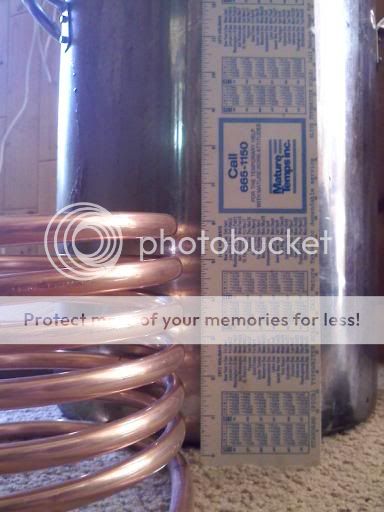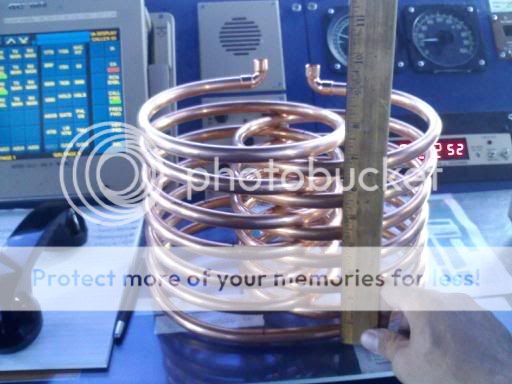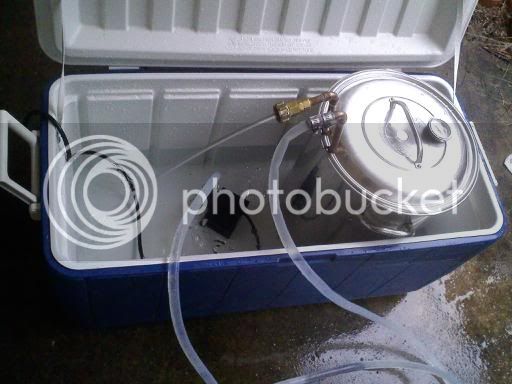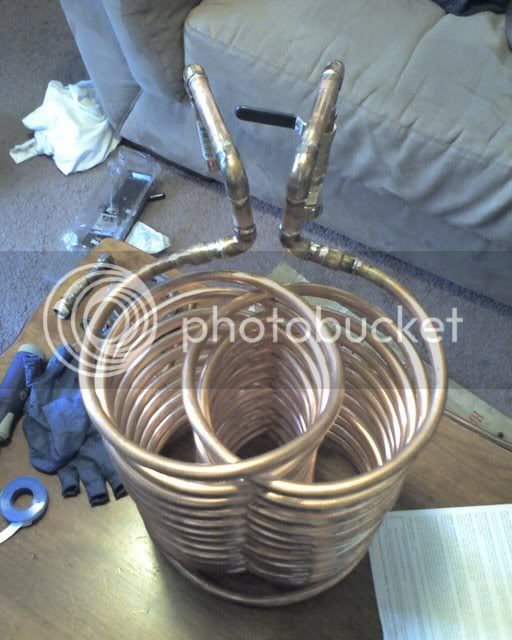Elfmaze
Well-Known Member
I bought a fifty foot roll of soft copper pipe. Cut the pipe in half after seeing the post on Ribcage IC's and seeing how big the chillers were with 25'.
Mine doesn't seem that impressive. It stands all of 6" tall in the pot. In my brew pot( 32 quart) the wort stands 2" tall per gallon. Meaning for a 5 gallon batch the liquid is 10" tall.
I will be circulating Ice water thru the IC via an ice water bath. so input water is ~32*. Will i benefit from making each side 25' and sweating the pipe back together. Or should i just wrap the 25' total in opposing coils?

Original post:
https://www.homebrewtalk.com/f51/diy-interwoven-rib-cage-immersion-chiller-106415/
Mine doesn't seem that impressive. It stands all of 6" tall in the pot. In my brew pot( 32 quart) the wort stands 2" tall per gallon. Meaning for a 5 gallon batch the liquid is 10" tall.
I will be circulating Ice water thru the IC via an ice water bath. so input water is ~32*. Will i benefit from making each side 25' and sweating the pipe back together. Or should i just wrap the 25' total in opposing coils?

Original post:
https://www.homebrewtalk.com/f51/diy-interwoven-rib-cage-immersion-chiller-106415/














































![Craft A Brew - Safale BE-256 Yeast - Fermentis - Belgian Ale Dry Yeast - For Belgian & Strong Ales - Ingredients for Home Brewing - Beer Making Supplies - [3 Pack]](https://m.media-amazon.com/images/I/51bcKEwQmWL._SL500_.jpg)






